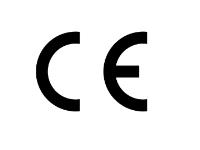 Add My Company
Add My Company
HOW DO I GET MY PRODUCT CE MARKED?
06-02-2023

HOW DO I GET MY PRODUCT CE MARKED?
A brief overview of CE marking and how we can help
We have had an increase in enquiries around CE and UKCA marking recently, so thought it may be helpful for our customers if we put some information together on the process.
CE marking allows a manufacturer to self-certify that their product conforms with the relevant standards before being sold in the EEA. The process can be complicated and requires knowledge of standards that are applicable to your product and therefore manufacturers often seek advice, but the responsibility for declaring conformity stays with the manufacturer. If you are an importer, it is important to note that you are responsible for confirming the product meets the relevant standards and has the required markings.
The UKCA mark is the UK equivalent and largely follows the same process. In an nutshell, for CE marking the manufacturer must ensure a product conforms with the EU requirements, involve a Notified Body if necessary, create a technical dossier and sign an EU Declaration of Conformity. It sounds straightforward, but the reality is it can be a long and complicated process so we will break it down.
1. Identify the Directive and product specific standards required. CE marking does not apply to all products, whereas other products may be subject to several EU requirements at the same time. Electrical and electronic items must comply with the Electromagnetic Compatibility Directive (2014/30/EU) and potentially the Low Voltage Directive (LVD) (2014/35/EU). If you are manufacturing a medical device, you will also have to comply with the Medical Device Regulations (MDR) (EU) (2017/745) for the EU.
2. Is a Notified Body assessment required? Not all products will require an assessment by a Notified Body, but if this is needed the CE mark will then need to be accompanied by the identification number of the Notified Body. If this is not required, the manufacturer must ensure the product complies with the technical requirements.
3. Check the product conformity The product must be tested against the relevant standards to ensure conformity.
4. Create and keep the product technical documentation This is an essential part of the CE marking process and shows that a product meets the necessary requirements. A Declaration of Conformity (DoC) must be drawn up for each product that is to be CE marked, and will include: - The manufacturers details, or the details of the authorised representative - Product details, including model number - List of the relevant standards and directives that the product conforms with - If applicable, the details of the notified body that conducted the conformity assessment - Name and signature of the person responsible - Any additional information required Certain directives will also require a risk or safety assessment.
5. Create a technical file The DoC will form part of the technical file, which must be kept and made available for the relevant authorities if this is requested. The technical file is a legal requirement and is determined by the relevant European Product Directive. The technical file, amongst other things, must include: - diagrams of circuits, bill of materials and constructive drawings that include any calculations and test results performed in the product development stage - any risk assessments that have been performed - the list of standards and directives (s) that have been applied as part of the conformity assessment process - copies of technical reports - user and installation instructions The technical information for a product must be kept for 10 years. Greater information can be viewed on our technical file blog.
6. Affix the CE mark Rules around the sizing and dimensions must be followed, which includes the letters being the same size and no smaller than 5mm. The CE mark must be affixed indelibly to a product, and also included on the packaging and accompanying documents.
What about UKCA? The process for the UKCA mark is generally the same, although some European Directives and standards have been replaced by a UK equivalent. For example, the Electromagnetic Compatibility Directive (2014/30/EU) is replaced in the UK by Electromagnetic Compatibility Regulations 2016.
Our team of experts can assist with reviewing technical documentation to ensure it is sufficient and the correct standards have been applied. We can also help with creating a technical file or Declaration of Conformity. Get in touch with us to see how we can support you with achieving compliance for your electrical product
For more information on HOW DO I GET MY PRODUCT CE MARKED? talk to Cranage EMC & Safety

